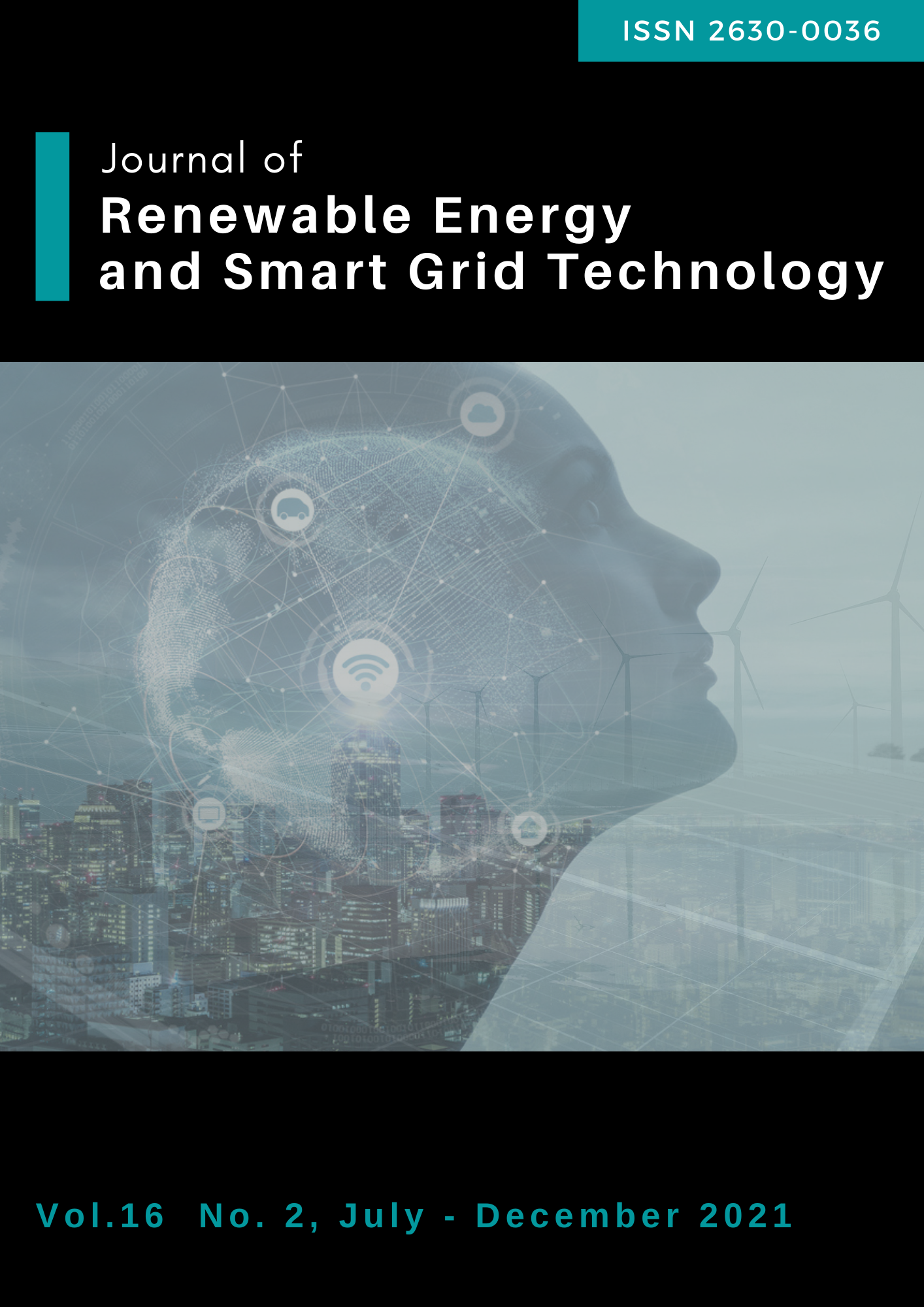Heat Recirculation Using a Porous Medium for Air Pre-Heating in a Biomass Stove
Keywords:
Heat Recirculation, Preheated-Air, Porous Medium, Biomass StoveAbstract
The purpose of this research is to develop a biomass stove with a heat-recirculating approach that utilized a porous medium material to capture combustion heat and pre-heat the air inlet. Corn cobs were employed as the solid fuel. The combustion chamber of the biomass stove was 40 liters in volume, and the porous medium was made of alumina ceramic balls with an average diameter of 10 mm and a porosity of 41.21 percent. This substance has the ability to pre-heat and premix air, hence increasing the stove's combustion efficiency. The fuel consumption rate was 1.2 kg/h, and the operating time was four hours with a lean-burn ratio of 0.75 for the fuel/air ratio. The power input, power output, percentage of char created, burning rate, and temperature efficiency were determined to be 0.006 kW, 94.98 kW, 38.88 percent, 20 g/min, and 28.28 percent, respectively. In comparison to the conventional biomass stove without porous medium, the new biomass stove efficiently reduces ash by 38.88 percent. This study demonstrated the successes of integrating heat recirculation into a biomass stove to increase efficiency.
References
International Energy Agency (IEA). (2013). World Energy Outlook 2013, WEO-2013 Traditional biomass use database. Retrieved September 10, 2014, from http://www.worldenergyoutlook.org/resources/energydevelopment/energyaccessdatabase/,
Gogoi, B. & Baruah, D. C. (2016). Steady state heat transfer modeling of solid fuel biomass stove: Part 1. Energy, 97, 283–295.
Kshirsagar, M. P., & Kalamkar, V. R. (2014). A comprehensive review on biomass cookstoves and a systematic approach for modern cookstove design. Renewable and Sustainable Energy Reviews, 30, 580–603.
Bansal, M., Saini, R. P., & Khatod, D. K. (2013). Development of cooking sector in rural areas in India – A review. Renewable and Sustainable Energy Reviews, 17, 44–53.
Tanaka, R., Shinoda, M., & Arai, N. (2001). Combustion characteristics of a heat-recirculating ceramic burner using a low-calorific-fuel. Energy Conversion and Management, 42(15–17), 1897–1907.
Jugjai, S., Wongpanit, N., Laoketkan, T., & Nokkaew, S. (2002). The combustion of liquid fuels using a porous medium. Experimental Thermal and Fluid Science, 26(1), 15–23.
Jugjai, S. & Phothiya, C. (2007). Liquid fuels-fired porous combustor-heater. Fuel, 86(7–8), 1062–1068.
Jugjai, S. & Polmart, N. (2003). Enhancement of evaporation and combustion of liquid fuels through porous media. Experimental Thermal and Fluid Science, 27(8), 90 –909.
Jugjai, S., & Rungsimuntuchart, N. (2002). High efficiency heat-recirculating domestic gas burners.pdf, 26, 581–592.
Zhang, X., Li, H., Zheng, L., Chen, Z., & Qin, C. (2017). Combustion characteristics of porous media burners under various back pressures. Natural Gas Industry, 37(2), 97–102.
Laodee, P., Setthapun, W., Talungjit, N., & Sawatdeenarunat, C. (2019). The combustion characteristic of biomass stove with air-preheated by porous medium. Asian Journal of Applied Research for Community Development and Empowerment, 3(1), 9–11.
Basu, P. (2010). Biomass gasification and pyrolysis practical design. Academic press, 49-52.
Jukjai, S. (2004). Combustion. Chulalongkorn University Press, Bangkok, Thailand, 91–99.
Arun, K., Venkata Ramanan, M., & Sai Ganesh, S. (2016). Stoichiometric equilibrium modeling of corn cob gasification and validation using experimental analysis. Energy and Fuels, 30(9), 7435–7442.
Panwar, N. L. & Rathore, N. S. (2015). Environment friendly biomass gasifier cookstove for community cooking. Environmental Technology (United Kingdom), 36(18), 2308–2311.
Belonio AT & Bhuyian A. (2012, January 5-7). Design of a continuous – type rice husk gasifier stove and power generation device for Bangladesh household. In: Proceedings of the 2nd international conference on the developments in renewable energy technology (ICDRET). Dhaka.
Sutar, K. B., Kohli, S., Ravi, M. R., & Ray, A. (2015). Biomass cookstoves: A review of technical aspects. Renewable and Sustainable Energy Reviews, 41, 1128–1166.
Oyelaran, O. A., Bolaji, B. O., Waheed, M. A., & Adekunle, M. F. (2015). Performance evaluation of the effect of binder on groundnut shell briquette. Applied Science and Engineering Progress, 8(1), 11–19.
Charoensuk, J. & Lapirattanakun, A. (2011). On flame stability, temperature distribution and burnout of air-staged porous media combustor firing LPG with different porosity and excess air. Applied Thermal Engineering, 31(16), 3125–3141.
Reed, T. B. & Larson, R. (1997). A wood-gas stove for developing countries. Developments in thermochemical biomass conversion, 985-993.
Belonio, A. T. (2005). Rice husk gas stove handbook. Iloilo City, Philippines: Central Philippine University.
Sangchot, R., Krittacom, B., Kathapant, M., Amatachaya, P., & Inla, K. (2014). Transpiration cooling system in Ni-Cr Open-celled form having PPI of 8.5. Research and Development Journal, 25(3), 37-46.
Downloads
Published
How to Cite
Issue
Section
License
All copyrights of the above manuscript, including rights to publish in any media, are transferred to the SGtech.
The authors retain the following rights;
1. All proprietary rights other than copyright.
2. Re-use of all or part of the above manuscript in their work.
3. Reproduction of the above manuscript for author’s personal use or for company/institution use provided that
(a) prior permission of SGtech is obtained,
(b) the source and SGtech copyright notice are indicated, and
(c) the copies are not offered for sale.









